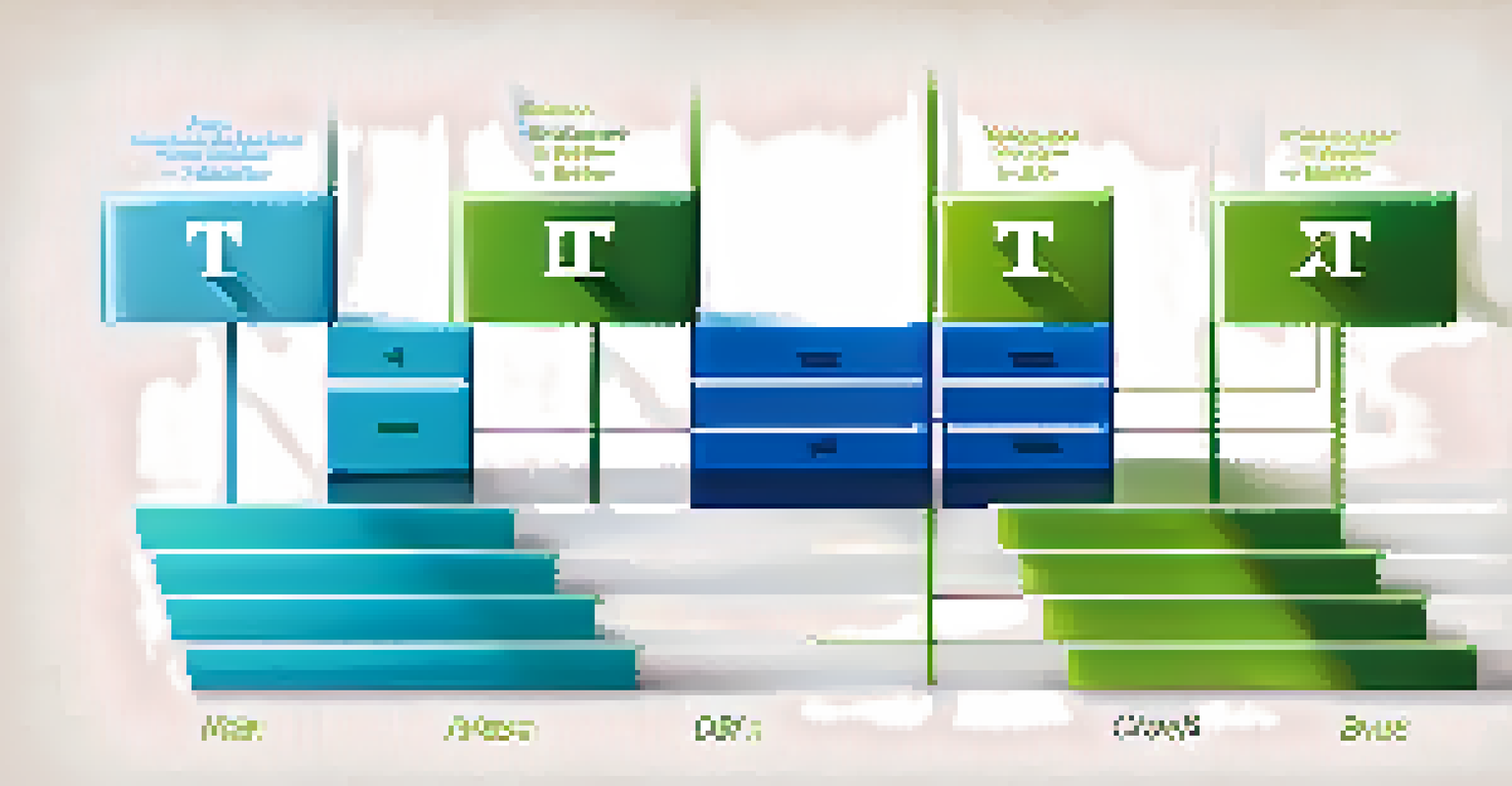Key Tax Terms Every Financially Literate Person Should Know

Understanding Tax Brackets and Rates
Tax brackets are ranges of income that are taxed at specific rates. Essentially, the more you earn, the higher your tax rate may be, but only on the income that falls within that bracket. For example, if you're in a 22% tax bracket, only the income over a certain threshold is taxed at that rate.
In this world, nothing can be said to be certain, except death and taxes.
Knowing your tax bracket helps you understand how much of your income goes to taxes, which is essential for effective budgeting. It also allows you to plan for retirement or investments, as different income levels can affect your strategy. Many people are surprised to learn that a raise may not always mean a significant increase in take-home pay due to these brackets.
Understanding tax brackets also highlights the importance of tax deductions and credits. By reducing your taxable income or directly lowering your tax bill, you can potentially move to a lower bracket, saving you money in the long run.
The Importance of Tax Deductions
Tax deductions are expenses that you can subtract from your total income to lower your taxable income. Common deductions include mortgage interest, state taxes, and charitable donations. This means if you earn $50,000 and have $10,000 in deductions, you only pay taxes on $40,000.

Knowing which deductions you're eligible for can make a significant difference in your overall tax bill. For example, if you work from home, you might qualify for home office deductions, potentially saving you hundreds of dollars. It's like finding hidden treasure in your finances!
Tax Brackets Impact Take-Home Pay
Understanding your tax bracket helps you budget effectively and plan for financial goals, as only the income within that bracket is taxed at the higher rate.
However, it’s important to keep good records and receipts to support your deductions. The IRS may require you to provide evidence of your expenses, so staying organized can help avoid any headaches during tax season.
What Are Tax Credits and How They Work
Tax credits directly reduce the amount of tax you owe, making them often more beneficial than deductions. For instance, if you owe $2,000 in taxes and have a $500 tax credit, your tax bill is now just $1,500. This is like a dollar-for-dollar discount on your taxes!
The avoidance of taxes is the only intellectual pursuit that still carries any reward.
There are two main types of tax credits: refundable and nonrefundable. Refundable credits can result in a refund if they exceed the taxes you owe, while nonrefundable credits can only reduce your tax bill to zero. Understanding this distinction is crucial for maximizing your tax savings.
Examples of common tax credits include the Earned Income Tax Credit and education credits. Familiarizing yourself with these can lead to significant savings, especially for families or students.
Navigating Taxable vs. Non-Taxable Income
Not all income is treated the same when it comes to taxes. Taxable income includes wages, pensions, and interest, while non-taxable income might include certain gifts, inheritances, or some Social Security benefits. Knowing the difference can impact your overall tax liability.
For instance, if you receive a gift of $15,000, that's generally not subject to income tax for you. However, it may be subject to gift tax for the giver if it exceeds the yearly exclusion limit. This nuance is vital for effective financial planning.
Deductions Reduce Taxable Income
Tax deductions, like mortgage interest or charitable donations, lower your taxable income, potentially saving you money on your overall tax bill.
Understanding what counts as taxable income can also help in retirement planning. For example, withdrawals from traditional retirement accounts are generally taxable, while withdrawals from Roth accounts might not be, depending on certain conditions.
The Role of Withholding and Estimated Taxes
Tax withholding refers to the amount of your income that your employer deducts for taxes before you receive your paycheck. This system helps ensure you pay your taxes gradually rather than all at once during tax season. It's like saving a little bit each month to cover your annual expenses.
For self-employed individuals or those with significant income not subject to withholding, estimated taxes are a way to pay your tax bill quarterly throughout the year. Understanding how much to set aside can help you avoid surprises come tax time.
Adjusting your withholding can also help you manage your cash flow. If you're receiving a large refund each year, it might mean you're having too much withheld, which could be better utilized throughout the year for investments or savings.
Capital Gains: What You Need to Know
Capital gains are profits made from selling an asset, such as stocks or real estate, for more than you paid for it. Understanding the difference between short-term and long-term capital gains is essential, as they are taxed at different rates. Short-term gains are typically taxed at your ordinary income rate, while long-term gains benefit from lower tax rates.
This distinction can influence your investment strategy. For instance, holding onto an asset for over a year may save you money on taxes, which is a crucial consideration for investors. It’s like waiting for a ripe fruit to pick; the longer you wait, the sweeter the reward may be.
Tax Credits Directly Lower Taxes
Tax credits provide a dollar-for-dollar reduction in the amount of tax owed, making them more beneficial than deductions for reducing your tax bill.
Additionally, if you sell an asset at a loss, you may be able to use that loss to offset gains, reducing your overall tax liability. This strategy, known as tax-loss harvesting, can be a smart way to manage your investments and taxes simultaneously.
Tax Filing Status: Why It Matters
Your tax filing status determines your tax rate and the deductions you can claim. The five main statuses are Single, Married Filing Jointly, Married Filing Separately, Head of Household, and Qualifying Widow(er). Each has different implications for your tax return and can affect your refund or tax owed.
For example, if you're married, filing jointly typically provides more tax benefits than filing separately. This is akin to pooling resources in a household; you might find that working together yields better results.

Choosing the right status is crucial, so it’s worth reviewing your options each year. Changes in your life, such as marriage or having a child, can affect which status is most advantageous to you.